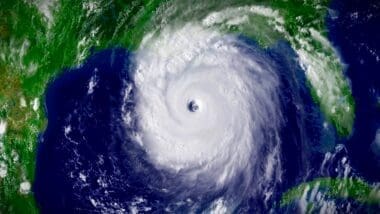November may signal the end of the Atlantic hurricane season, but history has shown that this late-season month can still produce significant storms. A number of hurricanes in November have left lasting impacts on the regions they struck, offering a stark reminder of the potential for late-season tropical activity.
Although the Atlantic hurricane season officially spans from June 1 to November 30, November is generally not known for high tropical activity. However, since 1850, 135 tropical storms have been recorded in this month alone, with about 75 forming after November 1. While most of these storms steer clear of the United States, this is not always the case.
Historically, only three hurricanes have made landfall on the continental U.S. in November since 1900. The most recent was Hurricane Nicole, which made landfall as a Category 1 storm near Cape Canaveral, Florida, on November 10, 2022. It exacerbated damage previously caused by Hurricane Ian, which struck Florida weeks earlier. Nearly four decades earlier, Hurricane Kate made headlines in 1985 when it hit the Florida Panhandle as a Category 2 storm on November 21, causing substantial economic damage along the Gulf Coast.
One of the more unique storms was the ‘Yankee Hurricane’ of 1935, a rare system that approached from the north. It made landfall near Miami on November 4, resulting in considerable damage and a death toll of five in the U.S., and prior devastation in the Bahamas. Meanwhile, Central America often bears the brunt of November hurricanes, with significant storms such as Eta and Iota in 2020 making landfall with intense force.
Perhaps most devastating was the unnamed Category 5 hurricane of 1932, which maintained its strength in the Caribbean and struck Cuba as a Category 4 storm. This hurricane, notorious for its deadly 20-foot storm surge, resulted in over 3,500 fatalities—the deadliest in Cuban history.
Hurricane Mitch, despite reaching Category 1 upon impacting Florida, is more infamous for the catastrophic flooding and mudslides it induced across Central America in late October and early November of 1998. This tragic event took nearly 20,000 lives, marking it as one of the deadliest tropical systems on record.
Hurricane Lenny in November 1999 was famed not just for its intensity but also its unusual west-to-east trajectory across the Caribbean. With winds nearly reaching Category 5, Lenny caused widespread damage in Puerto Rico and the Leeward Islands.
Category 4 Hurricane Michelle in 2001 was Cuba’s most damaging storm at its time, resulting in substantial infrastructure destruction. Yet, successful civil defense efforts kept the death toll to a minimum.
More recently, Hurricane Otto in 2016 made a rare landfall far south in Central America. This late-season hurricane crossed over Nicaragua and Costa Rica, leaving a trail of damage and 18 direct fatalities in its wake.
These notable storms underscore the importance of remaining vigilant throughout the entirety of hurricane season, even into the final month. November hurricanes serve as a potent reminder of nature’s unpredictability and the need for preparedness.
Source: Accuweather














